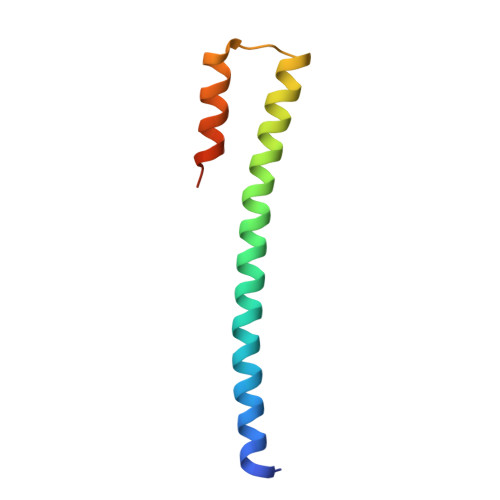An unconventional interaction between Dis1/TOG and Mal3/EB1 in fission yeast promotes the fidelity of chromosome segregation.
Matsuo, Y., Maurer, S.P., Yukawa, M., Zakian, S., Singleton, M.R., Surrey, T., Toda, T.(2016) J Cell Sci 129: 4592-4606
- PubMed: 27872152
- DOI: https://doi.org/10.1242/jcs.197533
- Primary Citation of Related Structures:
5M97, 5M9E - PubMed Abstract:
Dynamic microtubule plus-ends interact with various intracellular target regions such as the cell cortex and the kinetochore. Two conserved families of microtubule plus-end-tracking proteins, the XMAP215, ch-TOG or CKAP5 family and the end-binding 1 (EB1, also known as MAPRE1) family, play pivotal roles in regulating microtubule dynamics. Here, we study the functional interplay between fission yeast Dis1, a member of the XMAP215/TOG family, and Mal3, an EB1 protein. Using an in vitro microscopy assay, we find that purified Dis1 autonomously tracks growing microtubule ends and is a bona fide microtubule polymerase. Mal3 recruits additional Dis1 to microtubule ends, explaining the synergistic enhancement of microtubule dynamicity by these proteins. A non-canonical binding motif in Dis1 mediates the interaction with Mal3. X-ray crystallography shows that this new motif interacts in an unconventional configuration with the conserved hydrophobic cavity formed within the Mal3 C-terminal region that typically interacts with the canonical SXIP motif. Selectively perturbing the Mal3-Dis1 interaction in living cells demonstrates that it is important for accurate chromosome segregation. Whereas, in some metazoans, the interaction between EB1 and the XMAP215/TOG family members requires an additional binding partner, fission yeast relies on a direct interaction, indicating evolutionary plasticity of this critical interaction module.
Organizational Affiliation:
Synthetic and Systems Biochemistry of the Microtubule Cytoskeleton Laboratory, The Francis Crick Institute, 1 Midland Road, London NW1 1AT, UK.















